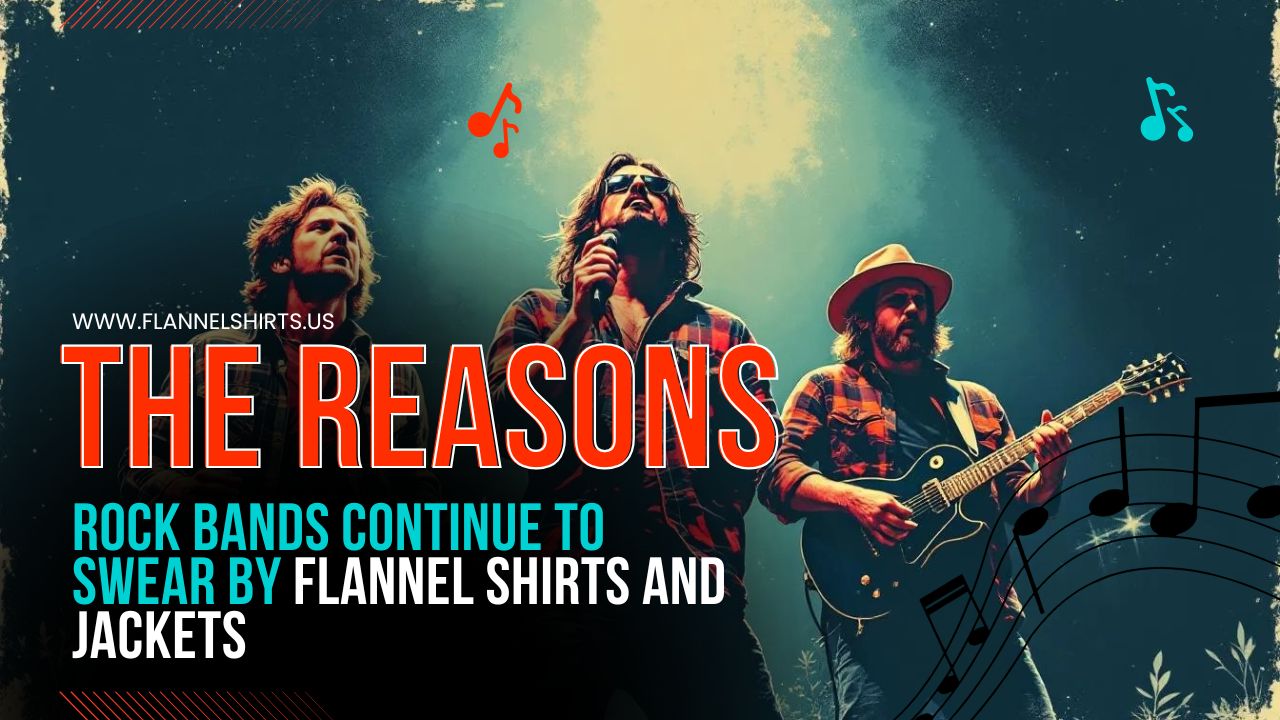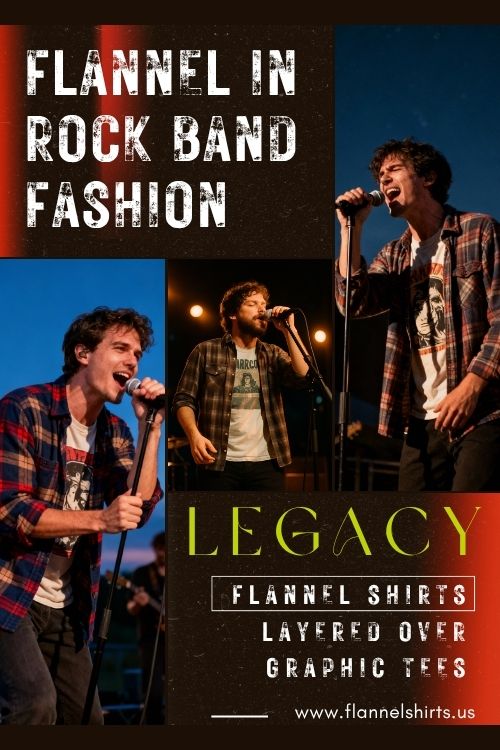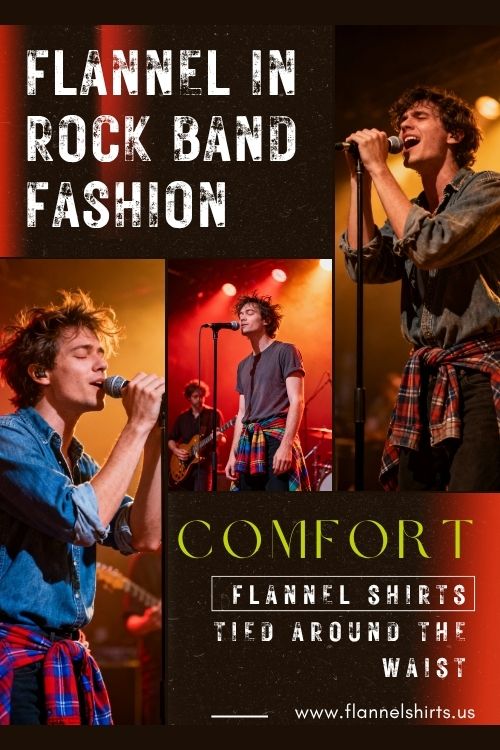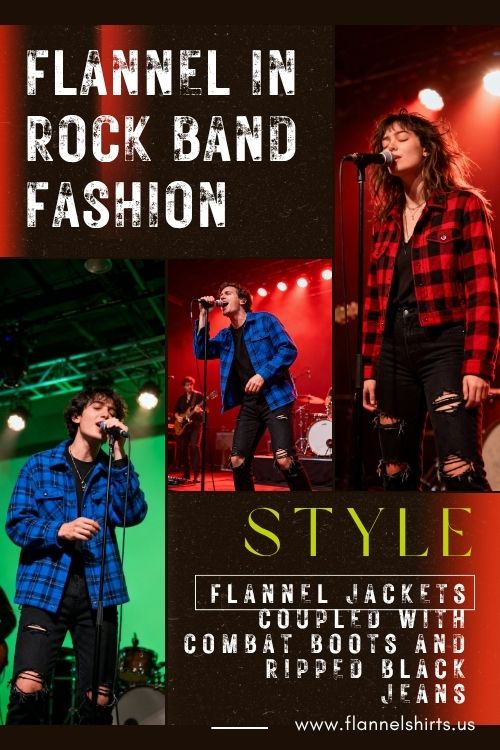

Table of Contents
Rock fashion and music have always gone hand in hand, making statements that span eras. From the grunge resurgence of the ’90s to the defiant streak of punk icons, what musicians sport on stage becomes a cultural trend offstage. Among these lasting styles, one item stands out as an immortal favorite—the flannel shirt. Usually teamed with oversized jackets, leather boots, or distressed jeans, flannel has become synonymous with rock band style. But why does this superficial, checkered material continue to hog the cupboards of rising stars and legendary performers alike?
Flannel’s rock heritage took form during the grunge flurry of the early 1990s. Bands like Nirvana, led by Kurt Cobain, redefined fashion with their nonchalant, anti-establishment aesthetic. Cobain’s easygoing, unbuttoned flannel layered over graphic tees became an unstated rule for those who resonated with verismo over veneer. His style reflected the unvarnished nature of the music by accepting flaws rather than trying to seem flawless.

This pattern persisted throughout time. Musicians like Pearl Jam’s Eddie Vedder still wear flannels onstage decades later, demonstrating that this tough need is not only associated with nostalgia. Every generation of rockers may relate to this language of individualism.
One of the primary reasons flannel stays a rock essential is its mix of versatility and convenience. Whether worn oversized, layered under a jacket, or tied around the waist, flannel adapts easily to numerous styles. Rock bands are known for unpredictable travel schedules, back-to-back gigs, and marathon rehearsals. Flannel provides protection in cooler tour areas and breathability during intense performances.

Besides, the rugged surface of flannel complements the essence of rock. It’s not mint or dapper—it’s real, natural, and earthy. In a set that heralds nonconformity, these markers evolve into a badge of honor.
Although the flannel scene is dominated by shirts, rock ensembles have also made room for jackets. Big plaid jackets, frequently coupled with combat boots and ripped black jeans, strengthen the revolutionary vibrancy of classic rock. Consider Axl Rose in the late ’80s, swaggering onto the stage with layered leather and flannel—a visual anthem of spunk and passion.

More lately, bands such as Kings of Leon and The Black Keys have adopted this outerwear fashion, combining vintage allure with a contemporary edge. It demonstrates how flannel jackets have changed from being used for practical purposes to becoming stylish pieces that are ready for performance.
Flannel’s stronghold in rock culture has coaxed wider fashion trends. The early 2000s saw a revival of grunge-inspired aesthetics, where musicians and fans alike welcomed mismatched layers, distressed materials, and thrift-store discoveries. Today, alternative style baits heavily from these gists, with flannel constantly materializing alongside graphic band tees, chunky boots, and ripped denim.
Icons such as Dave Grohl continue to endorse this look, muddying the line between concert and casual wear. Meanwhile, indie rock acts have given flannel a more washed-out twist, teaming it with sneakers and skinny jeans, asserting its phantasy in subgenres past hard rock.
What distinguishes flannel as really ageless is its capacity to develop while preserving its uniqueness. Rock bands value sincerity, and flannel symbolizes that mentality. Unlike passing fashion trends, it signifies longevity, ease, and uniqueness. Its rustic appeal and adaptability to many conditions make it an ideal option for life on the road, while its cultural symbolism guarantees that it never seems out of place on stage.
Moreover, flannel beats gender boundaries. From Courtney Love’s rowdy flair to Joan Jett’s aggressive stage presence, the material has been adopted by rock queens and kings alike. It’s more than simply apparel; each checkered line represents an attitude.
As fashion continues to reclaim one-time trends, flannel stays a steady anchor in rock’s ever-changing armoire. Emerging bands are melding it with experimental patterns, faux leather pants, and metallic accessories, guaranteeing the look feels reinvigorated without deserting its origins. In keeping with the changing morals of the music business, even sustainable fashion projects have taken note, with many choosing eco-friendly flannel fabrics.
Retailers and business owners could gain from the perpetual need for rock fashion items with flannel accents. Buying premium flannel from reputable manufacturers guarantees trend-driven styles that appeal to music-inspired fashionistas everywhere, from shirts and jackets to edgy layering items.